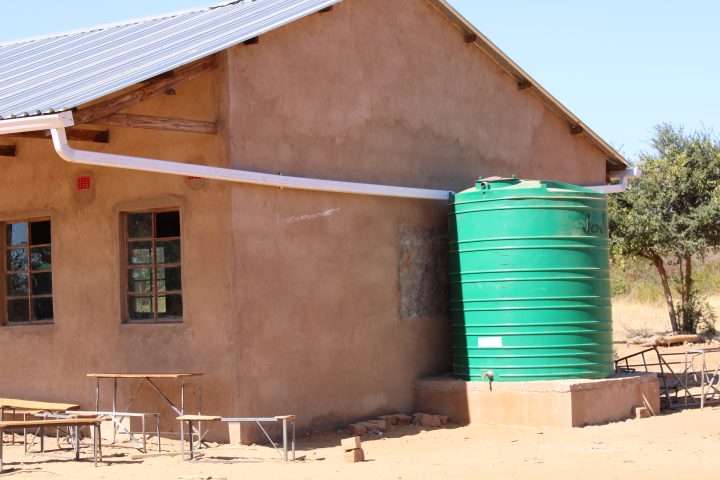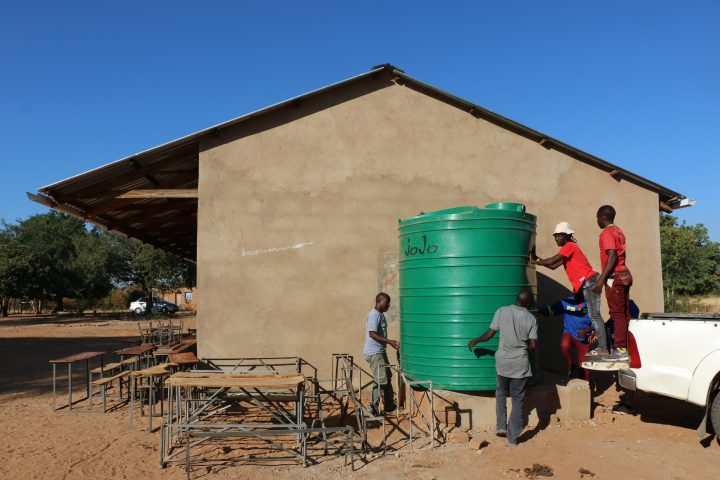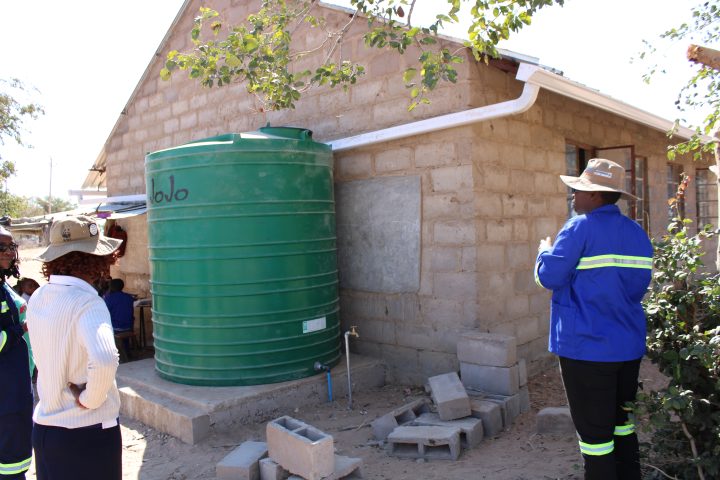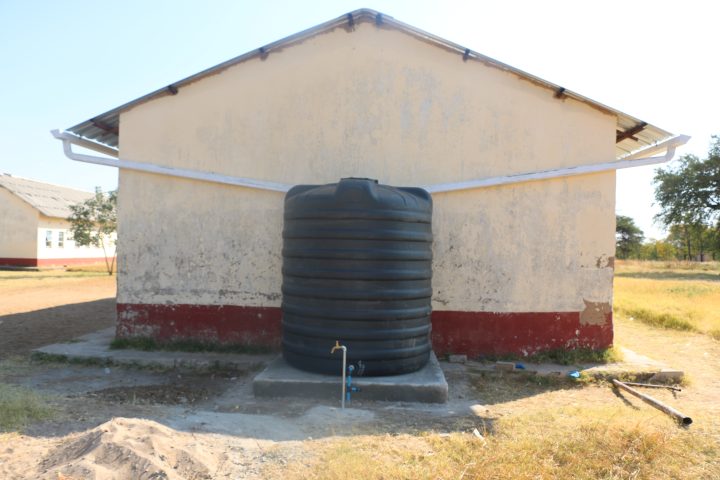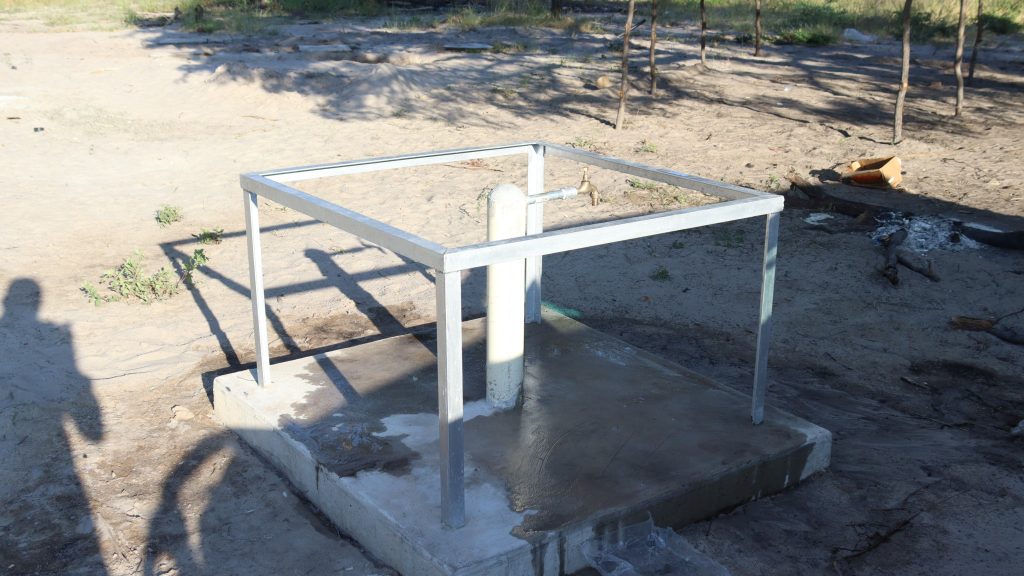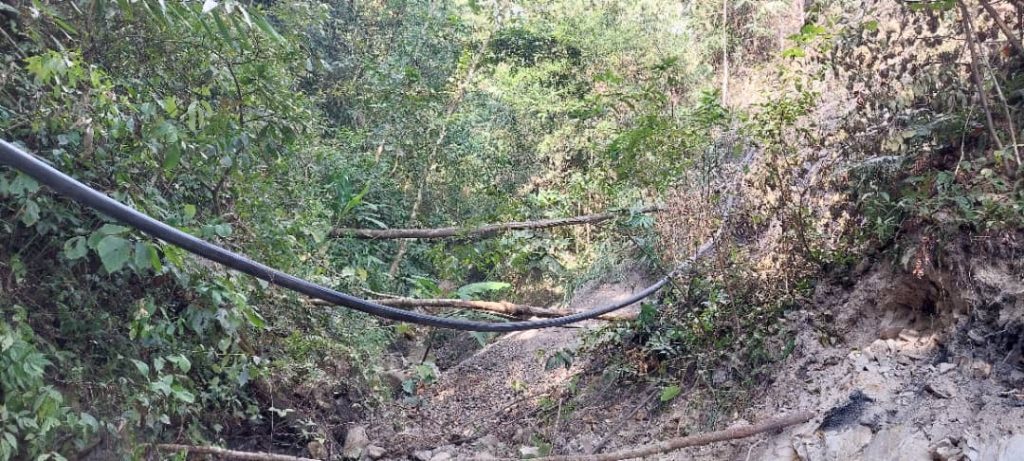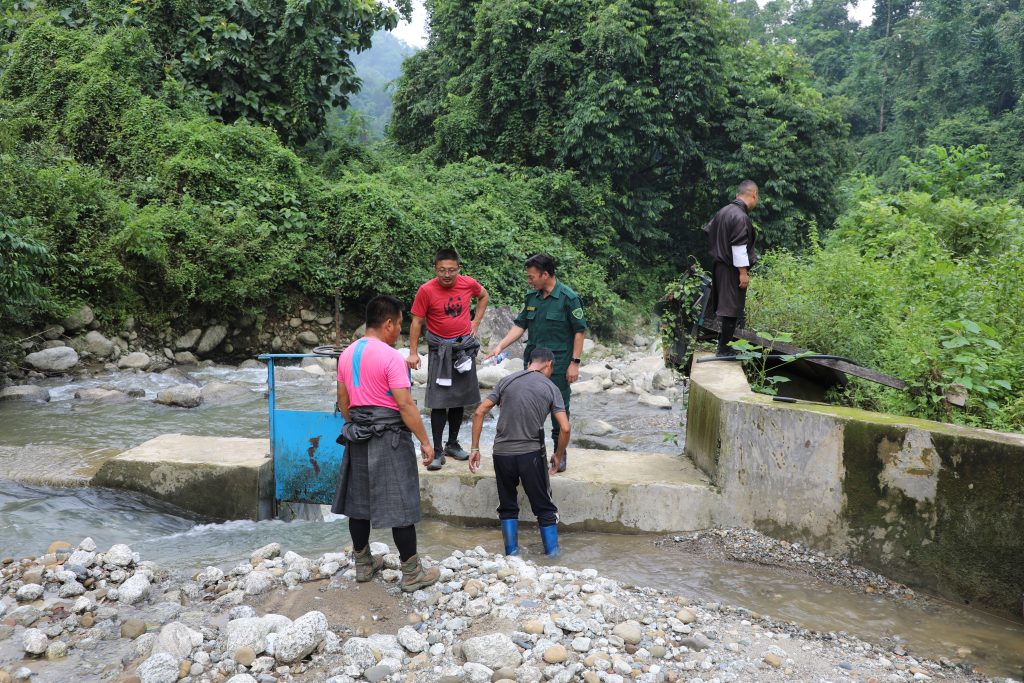Purpose
Improve water access and supply for children and staff in 6 schools in 3 communities in Zimbabwe.
Climate Impacts
The following impacts were reported by communities in Manjolo, Pashu, and Mpanedziba:
• Loss of water source due to decreased rainfall and extreme heat
• Increased human-wildlife conflict as both compete for the same resources
• Livestock mortality due to lack of water and suitable pasture
• Reduction in crop yields and wild fruits
• Reduced income generation due to declining agriculture yields
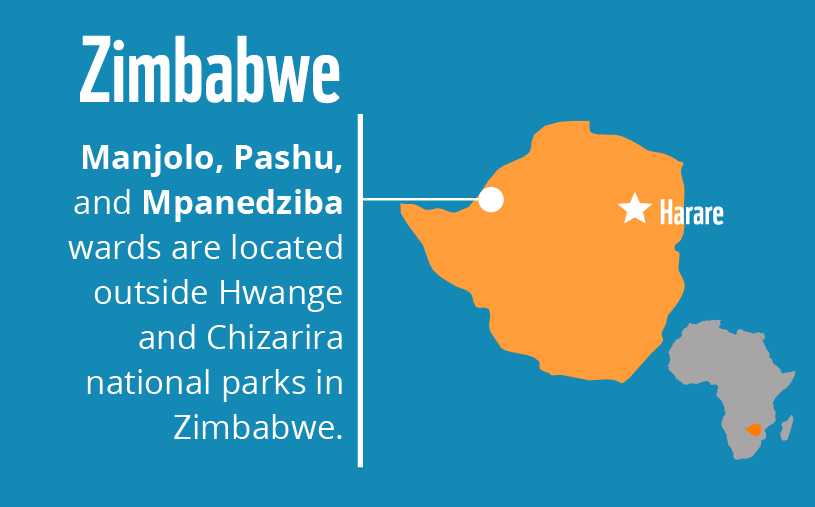
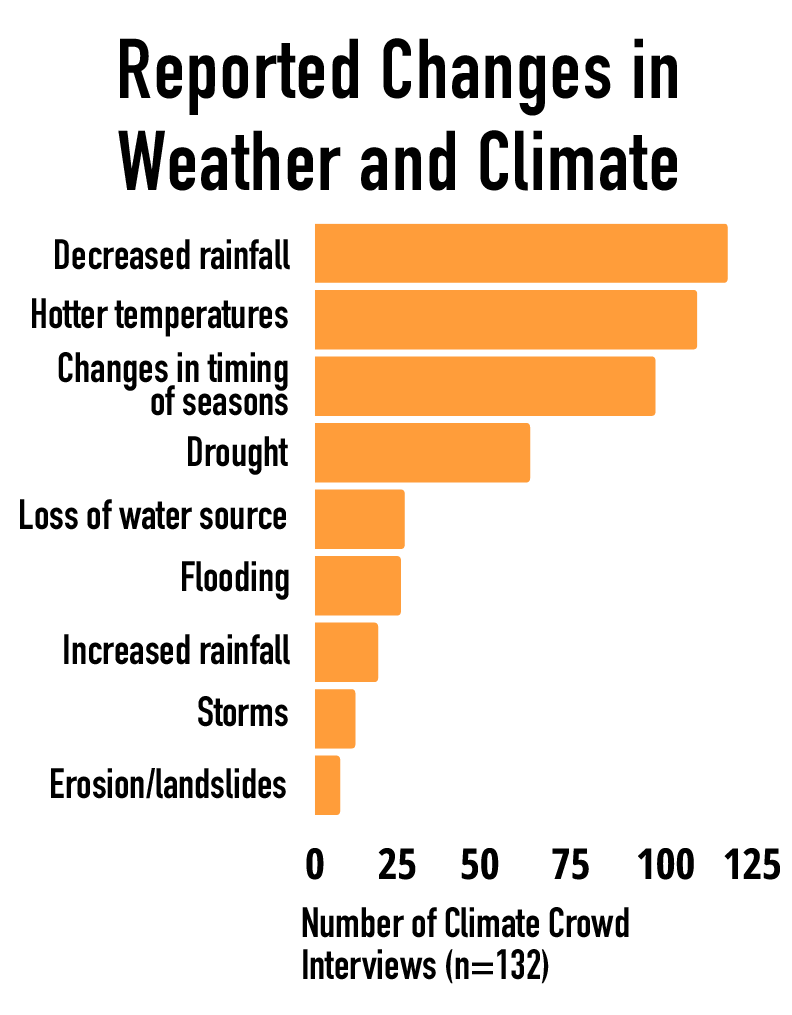
Activities
Identification of Sites
6 schools with aluminum-sheet roofing were selected by communities during engagement sessions.
Equipment Installation
An external contractor installed the water harvesting equipment at each site. The equipment included the 5,000-liter water tanks, gutters for the roof, and pipes to transport the rainwater from the gutters to the tanks.
Water Collection
The harvested rainwater is regularly collected and supplied to the school children and staff throughout the rainy season and into the dry season.
project outcomes
project design
The three target wards are located in a region of Zimbabwe that is characterized by low and erratic rainfall, leading to frequent water scarcity. as the water table drops and sources such as shallow wells dry up. To increase water availability, 6 rooftop rainwater harvesting systems were installed in 6 schools within the 3 target wards (2 schools per ward). The systems divert rainwater runoff from the aluminum roofs through gutters to 5,000-liter water storage tanks, equipped with taps to ensure school staff and children have a water source for hand washing and in extreme conditions, for drinking. The harvested water can also be used for new horticulture projects.
The installation of the rainwater harvesting systems was preceded by community engagement sessions where community members and WWF staff co-designed adaptation interventions in the three areas. Prior Informed Consent sessions were conducted with the beneficiary communities and partner organizations/stakeholders to get final authorization as well as understand any existing cultural and/or policy issues that would deter successful project implementation. The project will be monitored after every rainy season to assess the amount of water that has been harvested. To ensure all the available water is being harvested, school authorities envisage creating additional reservoirs to harvest spillover water. System installation and project implementation was made possible with the help of the Rural District Councils, Traditional Leadership, the Agricultural Technical and Extension Services Department and school staff, students, and their families.

